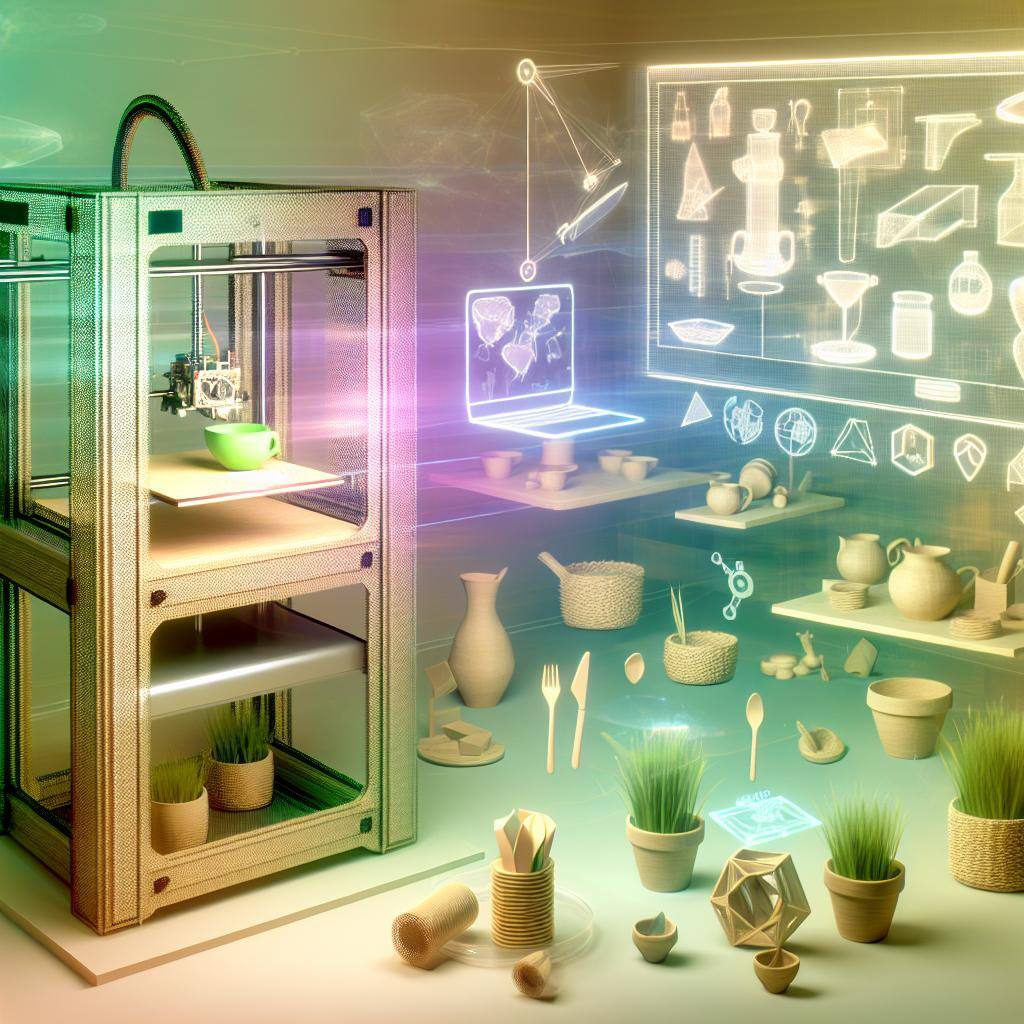
Numerous sectors are actively seeking methods to minimize waste, scrap, and rework to boost their financial performance, yet these efforts are equally crucial for sustainable operations. By optimizing material usage, cutting down on waste, and enhancing processes, industries can significantly reduce the accumulation of trash, excess materials, and faulty components.
While previous articles have delved into the origins of waste, like our piece on Waste vs Scrap, One and the Same, they have yet to explore the multitude of innovations driving sustainability and quality improvements. Let's now delve into the advancements shaping the 3D Printing industry and their profound impact on sustainability.
The first 3D printer came about in 1981 when Dr. Hideo Kodama invented an early version of a rapid prototyping machine. It worked by building parts layer by layer using a resin that hardens when exposed to UV light. We’ve come a long way since then with modern printers being able to create just about anything from toys to car parts. But there’s a not-so-often-considered side to this innovation: waste. A significant amount of waste is produced during the printing process, but fortunately, innovative solutions have emerged to address this environmental concern.
Use of Recycled Materials
 A highly impactful method for reducing waste involves utilizing recycled materials. Traditional 3D printing relies heavily on new plastics, which ultimately adds to the harm done to the environment. According to the National Geographic Society, nearly 300 million tons of plastic are produced each year with a staggering amount of that ending up in landfills. Making the switch to recycled materials not only aids in reducing the demand for new resources but also contributes to a more sustainable approach to 3D printing. Emerging companies like Filamentive and Recyclebot focus on transforming discarded plastics into filaments that are compatible with 3D printing technology. By incorporating these materials, the printing process becomes more sustainable, fostering a circular economy. Not only do you diminish waste, but you also breathe new life into materials once deemed as refuse.
A highly impactful method for reducing waste involves utilizing recycled materials. Traditional 3D printing relies heavily on new plastics, which ultimately adds to the harm done to the environment. According to the National Geographic Society, nearly 300 million tons of plastic are produced each year with a staggering amount of that ending up in landfills. Making the switch to recycled materials not only aids in reducing the demand for new resources but also contributes to a more sustainable approach to 3D printing. Emerging companies like Filamentive and Recyclebot focus on transforming discarded plastics into filaments that are compatible with 3D printing technology. By incorporating these materials, the printing process becomes more sustainable, fostering a circular economy. Not only do you diminish waste, but you also breathe new life into materials once deemed as refuse.
Smart Printing Strategies
Implementing smart printing strategies can have a significant impact on reducing waste. It's often overlooked that 3D printers can be inefficient, leading to unnecessary material wastage. To avoid pitfalls like over-designing or using excessive support material, utilizing software tailored for optimizing print jobs is crucial. These programs, such as slicing software that strategically places supportive structures only where essential, can result in substantial filament savings. Leading industry players like Ultimaker and Prusa Research are at the forefront of developing tools to assist users in creating more efficient print settings. Furthermore, thoroughly analyzing and testing designs before printing is essential to ensure that only necessary components are finalized.
Material Efficiency Techniques
Utilizing advanced algorithms and techniques like topology optimization can significantly enhance material efficiency in 3D printing. By simplifying designs and reducing excess, creators can achieve more with less, creating strong and lightweight components like titanium flanges. This not only improves durability but also decreases the need for frequent replacements, ultimately reducing material consumption over time.
By incorporating practices such as utilizing recycled materials, implementing smart printing strategies, and embracing material efficiency techniques, the industry can make a substantial impact in reducing its environmental footprint. Embracing these initiatives not only contributes to a healthier planet but also helps in cutting costs and fostering a culture of innovation.
Interested in Learning More About Sustainability?
Find out how Sandvik is working to improve sustainability across its business units by clicking here (https://www.home.sandvik/en/about-us/sustainability/goals/)
These Stories on Tolerance Analysis
Comments (1)